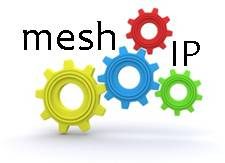 The benefits of removing the capital investment and the day to day management of hardware and software to leverage an on-demand, metered computing service, charged on a consumption basis, are now widely accepted. The rise in cloud computing is indicative of our need to make the most efficient use of resources and minimise costs by accessing computing resources and infrastructure when, and as, it is needed.
The benefits of removing the capital investment and the day to day management of hardware and software to leverage an on-demand, metered computing service, charged on a consumption basis, are now widely accepted. The rise in cloud computing is indicative of our need to make the most efficient use of resources and minimise costs by accessing computing resources and infrastructure when, and as, it is needed.
This business model has drawn many comparisons between the cloud and what we think of as more traditional, public ‘utility services’ such as gas, electricity and water. Yet, to what extent are these comparisons valid? Are we at the stage where cloud services can be accessed and delivered in the same way as any other utility service; where we can activate the service quickly and easily, switch the service on and off, and easily move between different providers?
While comparisons seem reasonable, I’d argue that we do need to exercise some caution when it comes to making these associations between the services. There are distinct differences not only in the way these services are delivered, but also the way in which they are regulated and governed. To this end, we should define what we all understand as utilities; typically these are mature industries, there’s a level of consistency in delivery, they must operate to certain standards and they are independently regulated. They are also characterised by the ‘commodity’ nature of the service – we don’t care how the outcome is delivered and, typically they don’t require a ‘high touch’ level of customer service.
Certainly on this basis we’re not comparing ‘like with like’. Transitioning to, and between cloud services is a more complex undertaking; there are more variables to consider not only between providers, but also between the kinds of service that is being delivered. The use cases (e.g. dev/test or production; business critical or not; self-managed or managed etc.) and the business outcomes which need to be achieved, significantly affect the required cloud functionality and how associated cloud services from the provider need to be delivered and whether a private or public solution is required. Further, as it’s still relatively new, there are not yet any all-encompassing ‘best practices’ or regulatory standards governing the delivery of cloud solutions.
From the cloud consumer’s perspective accessing critical business applications via the cloud may require more specialised infrastructure and different skills and expertise from a provider. Equally, the provider’s transparency in the service they are providing and their willingness to customise how the cloud infrastructure is designed, and how the service is delivered, is essential in order for clients to be confident that the provider is able to deliver the service levels they claim.
Providers or industry analysts may refer to “utility” services, but the variability in how cloud services need to be delivered and consumed, and the impact which variability in delivery still has on overall service experience means that “utility” is just a label masking something very different under the surface.
Author: Clive Grayson
Source
- The Customer Edge Drives the Need for NaaS - June 25, 2023
- Blockchain Evolves And Secures - January 13, 2019
- Bessemer Ventures’ 2018 Cloud Computing Trends - February 25, 2018




